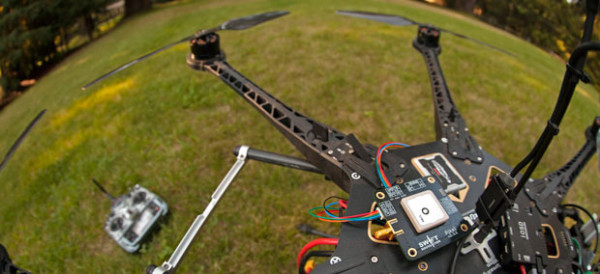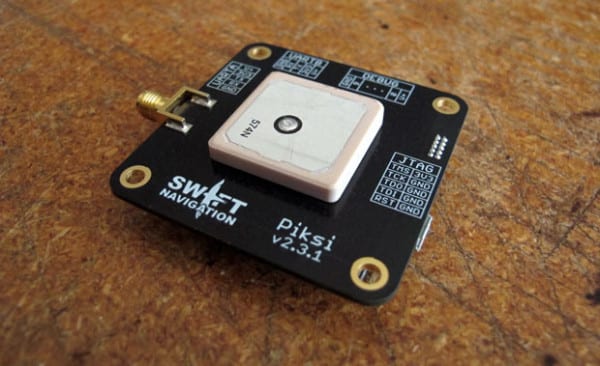Global Positioning System (GPS) provides location and time information in all weather conditions. Colin Beighley and Fergus Noble, the team members of Swift Navigation, have devised Piksi (pronounced “pixie”), a new GPS receiver that could give unmanned aerial vehicles (UAVs) a GPS signal accurate to an inch.
Fergus Noble and Colin Beighley used to work at a company named Joby Energy where they successfully developed an RTK GPS system for high-altitude wind turbines. But that couldn’t provide GPS signal accuracy to an inch. After long hard work and effort, they build Pixsi, a GPS receiver that could give unmanned aerial vehicles a GPS signal accuracy to an inch.
Piksi is a Real-Time Kinematic (RTK) GPS receiver. The receiver gets signals from satellites in Earth’s orbit. These satellites transmit a signal of their own location in orbit, with a time signature, down to Earth. A receiver uses the signals from four or more satellites to pinpoint a spot on Earth. Wherever the signals overlap on Earth, that’s where the receiver is, and this makes the GPS system. However, the size of the waves transmitting the signal mean that the spot of overlap is several feet.
RTK works from a disparity in the length of the code transmitted and the length of the wave carrying the signal. The signal itself travels in a wave, with the location information coded in segments 985 feet long. The waves making up that code are much smaller than the whole code, with each wave about 7.5 inches from peak to peak.
However, Piksi uses this information to create a more precise measurement. In communication with another RTK receiver for reference, the RTK GPS system, like one in use on a drone, compares the difference in number of wavelengths between the reference point and the system itself. Since the reference point is a known location, this cross-checking of wavelengths, combined with clever algorithms, lets the RTK receiver pin the location down to within inches. Here’s a video of how Piksi works.
The Swift Navigation is collecting fund through popular crowdsourcing site Kickstarter. As of writing, the team has already received over six times its initial funding goal, leaving 17 days still left.
For more details, visit the source link below.
Source: Kickstarter
Thanks To: PopSci
[ttjad keyword=”gps-device”]





